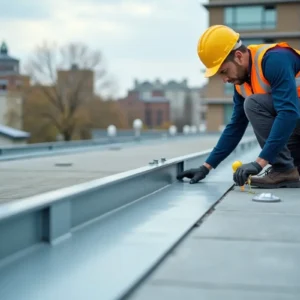From hurricane-resistant materials to humidity-proof finishes, remodeling in the Sunshine State requires specialized knowledge and careful planning. Homeowners in Lake Mary and across Central Florida need to think about water damage and the way local weather affects kitchens and bathrooms, following design practices used in Florida homes built to handle heat, humidity, and storms.
Florida homes face long, hot summers, high humidity, and frequent storms, so regular building materials often fail under these conditions. Wood can swell or warp when it stays damp for too long. Some surfaces may crack, while others develop mold problems much faster than in other states. Because of this, local rules about building and repairs include special steps to protect homes from Florida weather.
Planning a successful home renovation in Florida means being attentive to these unique environmental factors. From selecting appropriate materials to scheduling work during the most favorable weather periods, thorough preparation can mean the difference between a lasting upgrade and costly repairs.
Contents
- 1 Florida Weather Challenges That Impact Home Renovations
- 2 Hurricane-Resistant Design Elements
- 3 Water-Resistant Flooring Materials
- 4 Material Selection for Florida’s High-Humidity Environment
- 5 Energy-Efficient Renovation Strategies for Florida Homes
- 6 Permitting and Code Requirements for Florida Renovations
- 7 Common Compliance Mistakes and How to Avoid Them
Florida Weather Challenges That Impact Home Renovations
Florida’s climate, with hurricanes, tropical storms, flooding, and year-round humidity, creates major obstacles for kitchen and bathroom renovations. These weather patterns can damage improperly renovated spaces, leading to costly repairs.
These rooms contain plumbing, electrical systems, and expensive fixtures that can be damaged by water intrusion during storms. High humidity can cause cabinets to warp, countertops to separate from bases, and mold to grow behind walls. If you want to ensure these spaces are built to withstand local weather conditions, it’s important to work with a qualified Kitchen & Bathroom Contractor in Lake Mary, FL.
The cost of weather-related damage in poorly renovated Florida homes can add a significant financial burden. While the extent varies depending on location and building standards, repairs caused by water intrusion or mold can sometimes exceed initial renovation costs. The inconvenience of having damaged living spaces can outweigh upfront investments in weather-resistant materials.
Taking Florida’s weather into account during renovation calls for targeted actions. Choosing hurricane-rated windows protects interiors from wind-borne debris and supports compliance with local building codes. Moisture-resistant materials help reduce the risk of mold behind walls and prevent swelling of cabinetry.
These challenges highlight the importance of building resilience into every stage of renovation, from material choice to installation techniques.
Hurricane-Resistant Design Elements
When renovating kitchens and bathrooms in Florida, hurricane resistance should be a top priority.
Impact-resistant windows and reinforced exterior doors help withstand flying debris during storms and prevent pressure changes that could damage the entire home.
Cabinets should also be anchored securely to wall studs using heavy-duty screws rather than standard mounting methods. This prevents detachment during strong winds or minor flooding. For tall pantry units, kitchen islands, and bathroom vanities, extra internal bracing helps distribute weight evenly and stabilise the structure, reducing the risk of tipping or plumbing damage.
Water-Resistant Flooring Materials
Water-resistant flooring is vital for Florida homes, particularly in areas prone to flooding. Luxury vinyl plank (LVP) flooring offers excellent water resistance while mimicking the appearance of hardwood. Porcelain tile remains a Florida favourite due to its impermeability to water and durability in high-humidity environments, as noted in flooring guides focused on Florida’s climate.
Material Selection for Florida’s High-Humidity Environment
For bathroom walls, moisture-resistant drywall (often called “greenboard”) provides basic protection, but cement board offers better performance in wet areas. Cement board will not deteriorate when exposed to moisture and creates a great base for tile installation.
Applying waterproof membranes between cement board and tile is a standard Florida practice to prevent water intrusion and meet building codes.
Mould-resistant paint formulations contain antimicrobial additives that slow down mould growth on surfaces. These paints work best when applied according to manufacturer specifications. Semi-gloss or satin finishes are recommended for bathrooms and kitchens as they resist moisture better than flat paints.
Countertop selection strongly affects durability in humid environments. Granite countertops require sealing to prevent water absorption and staining. In contrast, engineered quartz countertops resist mold and water penetration and do not require sealing.
Energy-Efficient Renovation Strategies for Florida Homes
Florida’s hot climate makes energy efficiency an important consideration for home renovations. ENERGY STAR appliances offer noticeable savings in kitchens, where refrigerators, dishwashers, and cooking appliances use a lot of electricity. Window placement and treatments strongly affect home cooling costs in Florida’s warm climate.
East and west-facing windows receive intense direct sunlight, increasing indoor temperatures. During kitchen renovations, consider adding exterior awnings, interior blinds, or energy-efficient window films to reduce solar heat gain.
LED lighting cuts both energy consumption and heat output compared to traditional bulbs. This is particularly important in kitchens, where multiple light sources often operate at the same time.
Water-saving fixtures help cut both water bills and energy costs connected with hot water heating. Low-flow faucets and showerheads can help reduce water usage without sacrificing performance. Dual-flush toilets allow users to choose a lower volume flush for liquid waste, which can help lower water consumption in busy Florida households.
Permitting and Code Requirements for Florida Renovations
Florida’s building codes specify requirements for hurricane, water, and electrical safety that kitchen and bathroom projects must address. In Central Florida counties, codes require wind-rated windows and exterior doors that withstand impacts during storms. For walls and roofs, codes mandate extra fastening at key joints, especially in hurricane zones.
In wet areas such as bathrooms and kitchens, local rules require cement boards or other non-paper-faced backer boards behind tile installations near showers, tubs, and sinks. Electrical outlets must include ground-fault circuit interrupter (GFCI) protection in all bathroom and kitchen installations, as required by Florida Building Code.
Getting a permit for a kitchen or bathroom renovation in Lake Mary involves submitting detailed project plans, proof of contractor licensing, and paying fees before starting construction, as explained in local renovation resources. Requirements and review times can differ between municipalities.
City offices usually offer checklists on their websites that spell out which documents and drawings are required. Waiting for permits and inspections can extend the duration of a renovation, so starting this process early helps keep projects on track.
Common Compliance Mistakes and How to Avoid Them
Using an unlicensed or uninsured contractor is a common mistake among those handling kitchen and bathroom remodels in Florida. Always verify contractor credentials on the state website to ensure they are licensed and can obtain proper permits.
Common code compliance issues in kitchen and bathroom renovations include insufficient ventilation, improper electrical installations near water sources, and inadequate waterproofing in shower areas, as seen in Florida remodeling mistake resources. Fixing these problems involves specifying exhaust fans that vent directly outside and installing GFCI devices at all outlets near sinks.
Successful Florida renovations require careful planning, compliant materials, and experienced professionals who understand local weather and code challenges.
By using moisture-resistant materials, waterproof membranes, and energy-efficient appliances, homeowners create durable and comfortable spaces that withstand Florida’s humidity and storms.
Renovating in Florida means more than improving appearances; it’s about protecting comfort, safety, and long-term value. From moisture control and hurricane resistance to proper permits and energy efficiency, every detail contributes to a home that lasts. Working with licensed professionals who understand Florida’s unique climate ensures each renovation stands strong – beautiful, compliant, and built to endure every season.




